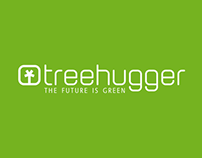Katherine Martinko (@feistyredhair)
Living / Green Home
December 22, 2017
In the process, you'll save trees and limit exposure to toxic chemicals.
If your house looks anything like mine, there is probably paper clutter all over the place. Whether it's school notifications, kids' crafts, magazines, catalogs, or receipts, the 'paper plague' often feels inescapable. And when you do take a moment to sort through everything, it just keeps coming.
The Environmental Paper Network (EPN) has put together a list of ways to opt out of at least some of the paper that comes into a typical household. Taking these steps does more than just declutter your home; it reduces demand for paper, slowing deforestation, and limits exposure to toxic chemicals, such as bisphenol A, found in thermal paper receipts.
Here's what you can do:
1) Stop catalogs. Sign up for Catalog Choice, which "has nearly 10,000 titles in the database, from clothing brands to credit card companies to charities." So far this effort has saved an estimated half-million trees.
2) Forgo the phonebook. When's the last time you cracked open a phonebook to find a number? These days most of us store numbers in our phones or we Google it. Despite this, a whopping 4.7 million trees are used each year to print U.S. phonebooks. Opt out by signing up here.
3) Don't take paper receipts. Reaching for a receipt after making a payment is an ingrained habit, but now's the time to break it. EPN writes:
"The Skip the Slip project from Green America is an effort to end the use of over 250 million gallons of oil, nearly 10 million trees, and 1 billion gallons of water each year to make thermal paper receipts, which are not even recyclable and contribute 1.5 billion pounds of waste per year."
You can sign up for Skip the Slip's campaign and pledge. Many businesses will now email receipts for your records, which is a much greener, more clutter-free option.
That is the extent of EPN's suggestions, but I'd add (4) opting out of junk mail at the post office (mine puts a red sticker on the mailbox, which means they won't give me any flyers, etc.) and (5) speaking to your kid's teacher about how much superfluous paper gets sent home. When you do get unwanted paper, use the backs for kids' activities and scribbling notes. You could even purchase a handy Paper Saver notebookin which to use discarded printouts from your home office.
These efforts may seem small, but small actions add up over time.




